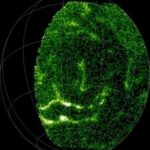The Ground Control Team is monitoring the functions of the Probe to ensure that all systems are working properly.
 The UAE Space Agency and Mohammed bin Rashid Space Centre have announced that the Ground Control station located in the Al Khawaneej area of Dubai has successfully received the first transmission from the Hope Probe at 03:10 am (UAE time).
The UAE Space Agency and Mohammed bin Rashid Space Centre have announced that the Ground Control station located in the Al Khawaneej area of Dubai has successfully received the first transmission from the Hope Probe at 03:10 am (UAE time).
Further details about the mission will be announced at a press conference that will take place at the Mohammed bin Rashid Space Centre today at 1:00 pm.
The Hope Probe blasted off from Japan’s Tanegashima Space Centre at 01:58 Monday morning. It was successfully released from the rocket at 02:55 am, and its solar panels were turned on at 03:00 am, the panels were then set to face the sun properly.
The UAE Space Agency and Mohammed bin Rashid Space Centre have announced that the first transmission was received at 03:11 am.
The Ground Control Team is monitoring the functions of the Probe to ensure that all systems are working properly.
Upon its arrival at Japan’s Tanegashima Space Centre, the Hope Probe went through many tests and preparations. This included filling the fuel tank with about 800kg of hydrogen fuel, checking the tank to ensure that it has no leaks, as well as checking the communications systems, moving the spacecraft to the launch pad and charging the batteries. Tests also included the crafts subsystems, such as measuring the electrical power, communication, altitude control, command and control, propulsion, thermal control and software systems.
There are three types of preparations that took place before the launch, the cover of the camera was removed, then the spacecraft was moved to the launchpad. The final preparations took place 18 hours before the launch.
It will take seven months to travel the 493m km. It is expected to reach its Mars orbit in February 2021, marking the 50th anniversary of the UAE.
The launch of the probe was delayed two times due to unstable weather conditions and finally, July 20 was chosen as the third launch date.
The probe will remain orbiting Mars for an entire Martian year, 687 days, to gather sufficient data. A single orbit around Mars will take the probe 55 hours.
EMM aims to draw a clear and comprehensive picture of the Martian climate, which will give scientists deeper insight into the past and future of our own planet as well as the potential of life for humans on Mars and on other distant planets.
The Hope Probe team will communicate and share findings with the global Mars science community on key questions that no other mission has addressed before.












































































